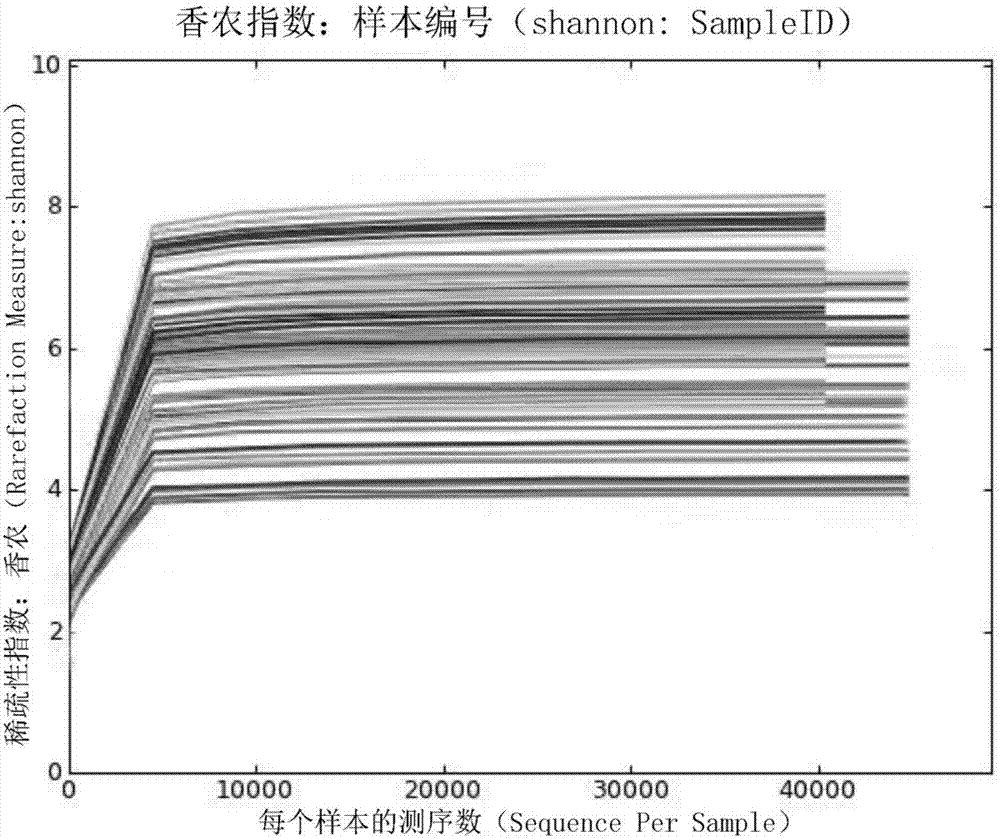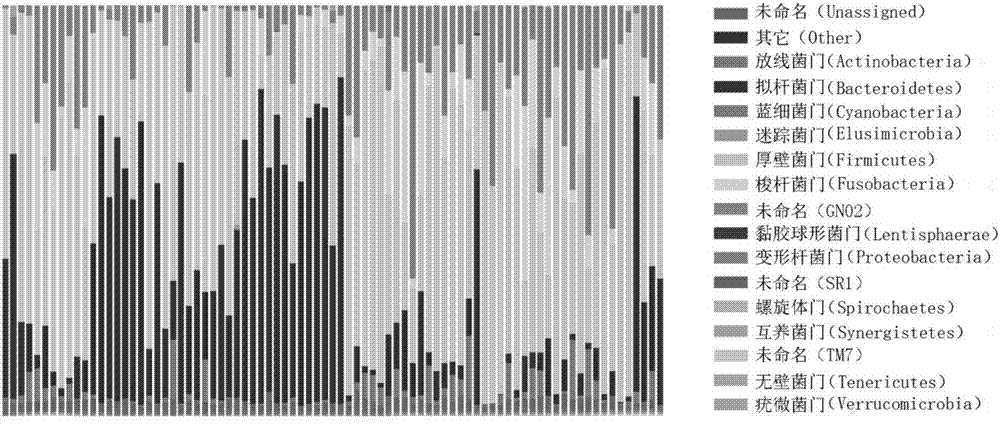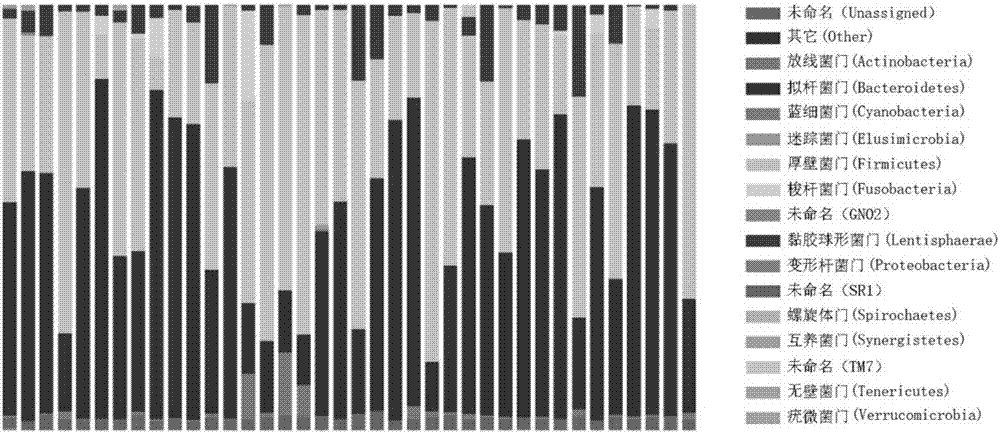Method for analyzing diversity and differences of intestinal and oral florae
An analysis method and a variety of technologies, applied in biochemical equipment and methods, microbial measurement/inspection, etc., can solve the problems that microorganisms are difficult to cultivate, and it is difficult to deeply understand the relationship between the overall structure of human flora
- Summary
- Abstract
- Description
- Claims
- Application Information
AI Technical Summary
Problems solved by technology
Method used
Image
Examples
Embodiment Construction
[0081] The technical solutions of the present invention will be further specifically described below through specific embodiments and accompanying drawings, but the present invention is not limited to these embodiments.
[0082] In Embodiment 1 of the present invention, the analysis method of the intestinal flora diversity from the family of children with autism children in this embodiment is as follows:
[0083] 1. Stool samples are collected. The stool samples in this embodiment are taken from 15 families with autism in children. The specific methods are:
[0084] (1) Discharge the feces into a clean and dry container. Note: Do not mix urine in the container.
[0085] (2) Use a small spoon in the sampling tube to collect feces. To prevent contamination of the surface of the feces, use a sampling spoon to gently scrape the surface, sample the interior of the feces, and put the small spoon containing the feces into the sampling tube.
[0086] (3) Tighten the tube cap and ind...
PUM
 Login to View More
Login to View More Abstract
Description
Claims
Application Information
 Login to View More
Login to View More - R&D
- Intellectual Property
- Life Sciences
- Materials
- Tech Scout
- Unparalleled Data Quality
- Higher Quality Content
- 60% Fewer Hallucinations
Browse by: Latest US Patents, China's latest patents, Technical Efficacy Thesaurus, Application Domain, Technology Topic, Popular Technical Reports.
© 2025 PatSnap. All rights reserved.Legal|Privacy policy|Modern Slavery Act Transparency Statement|Sitemap|About US| Contact US: help@patsnap.com



